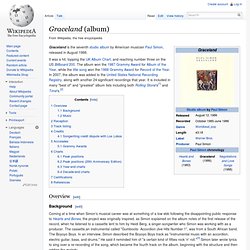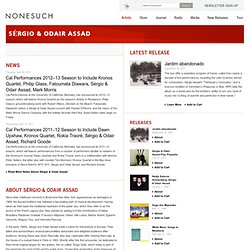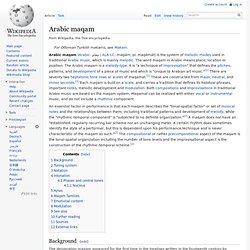

Shaman Guides. Music Faves. Bluegrass. Traditional Music. Music. Cuscomusic.com. Deep Forest. Angelique Kidjo - Career Highlights - Home. Batonga Foundation. Welcome to The Official Site of Ladysmith Black Mambazo. Graceland (album) Graceland is the seventh studio album by American musician Paul Simon, released in August 1986.

Graceland features an eclectic mixture of musical styles including pop, a cappella, isicathamiya, rock, and mbaqanga. The album was strongly influenced by the earlier work of South African musicians Johnny Clegg and Sipho Mchunu, and the Zulu-Western pop cross-over music realized in their band Juluka. Juluka was South Africa's first integrated pop band. Simon includes thanks to Johnny Clegg, Juluka and Juluka's producer Hilton Rosenthal in the "Special Thanks" citation included in Graceland's liner notes.
Much of the album was recorded in South Africa, and it features many South African musicians and groups. Simon included American 'roots' influences with tracks featuring Zydeco musicians such as Clifton Chenier and Tex-Mex musicians. The album drew accolades from the beginning. "I don't like the idea that people who aren't adolescents make records. Additional tracks Paul Simon answered: Paul Simon ~ "Diamonds on the Soles of Her Shoes" Miriam "Mama Africa" Makeba performs "The Click Song" ZM Makeba Trust. Miriam Makeba quotes. Until the End of the World - Original Soundtrack : Songs, Reviews, Credits, Awards. Badi Assad. Sérgio & Odair Assad. Since their childhood concerts in Brazil and their New York appearances as teenagers in 1969, the Assad brothers has followed a fascinating path of musical development.

Having taken as their base the traditional repertoire of the guitar duo, which they refer to as the works of the Presti-Lagoya duo, they started by adding to it the contributions of fellow Brazilians Radames Gnattali, Francisco Mignone, Heitor Villa Lobos, Marlos Nobre, Egberto Gismonti, Wagner Tiso, and Hermeto Pascoal. In the early 1980s, Sérgio and Odair Assad made a name for themselves in Europe. Their talent and extraordinary musical personalities astounded and delighted audience after audience. Among these was Astor Piazzolla, who was captivated after hearing them play at the house of a mutual friend in Paris in 1983. Shortly after this first encounter, he dedicated to them three original tangos for two guitars, the so-called Tango Suite, which today is part of the repertoire for most of the world’s guitar duos.
The Official Oregon Website. Collin Walcott: The Official Website. Welcome to Paul McCandless.com. Ralph Towner - Music Biography, Credits and Discography. Paul Winter Consort, one of the earliest exponents of world music, combining elements from various African, Asian, and South American cultures with jazz. "One of the more unusual aspects of the Consort has been the infusion of world music elements long before it became a buzzword.

" (John Diliberto) The story of Living Music is interwoven with that of the Paul Winter Consort, two entities which evolved during a forty year saga of adventure-through-music, beginning with Paul Winter's college jazz sextet in the early 1960s. Touring with his Jazz Sextet, close contact with the musical community of Brazil and a growing interest in the natural world and voices of the earth awakened in Paul Winter the desire to move into a broader realm of music and explore a richer texture of sound.
To this end, he formed the Paul Winter Consort. "I borrowed the name 'consort' from the ensembles of Shakespeare's time, the housebands of the Elizabethan Theater, which adventurously blended woodwinds, strings and percussion, the same families of instruments I wanted to combine in our 'contemporary' consort" Paul Winter's World of Living Music: Celebrating the Creatures and Cultures of the Earth. Arabic maqam. An essential factor in performance is that each maqam describes the "tonal-spatial factor" or set of musical notes and the relationships between them, including traditional patterns and development of melody, while the "rhythmic-temporal component" is "subjected to no definite organization.

"[2] A maqam does not have an "established, regularly recurring bar scheme nor an unchanging meter. A certain rhythm does sometimes identify the style of a performer, but this is dependent upon his performance technique and is never characteristic of the maqam as such. "[2] The compositional or rather precompositional aspect of the maqam is the tonal-spatial organization including the number of tone levels and the improvisational aspect is the construction of the rhythmic-temporal scheme.[2] Background[edit] Tuning system[edit] Notation[edit] Since microtonal intervals are impractical to accurately notate, a simplified musical notation system was adopted in Arabic music at the turn of the 20th century. .